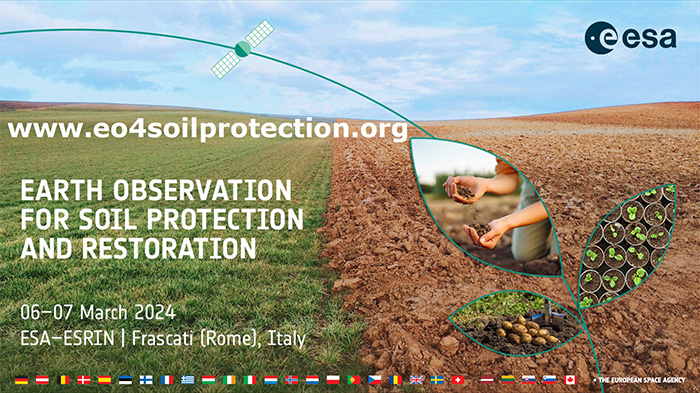ESA is committed to monitor soils, the weathering upper surface layer of the Earth, with its key role for terrestrial life functions: plant growth, gas exchange with the atmosphere, retention of water and nutrients; in short, the habitat for organisms, a key component of terrestrial ecosystems and the source to food and timber. In July 2019 ESA hosted the World Soils User Consultation Meeting, followed in June 2021 by the User Requirements Consolidation Workshop, in the context of the WORLDSOILS project.
In the meanwhile, the EU has launched its Soil Mission, bringing to the forefront the role soils must play in the Green Deal, i.e., 75 % of soils should be healthy in 2030, and the Paris Agreement through The International “4 per 1000” Initiative, stating that agriculture, and in particular agricultural soils, can play a crucial role in food security and climate change.
The EU soil regulatory framework has been consolidated over the past four years, culminating on July 5th 2023, with the proposal for a Directive on Soil Monitoring and Resilience (Soil Monitoring Law), which recalls the usability of Copernicus data for achieving the objectives. Now, corresponds to the Earth Observation scientific community to concretise the ways EO can serve to monitor the requirements of the various soil health indicators stated in the law.
SOC is a dynamic soil property reacting to past and current land use and management procedures. The rapidly evolving capacities of orbital sensors, with unprecedent high spectral, spatial and temporal resolutions over continental areas, are an essential component for monitoring the SOC seamlessly in the context of the EU Soil monitoring Law. Moreover, SOC satellite monitoring and mapping will be one of the building blocks for a trustworthy and cost-effective reporting and verification (MRV) for carbon capture and removal.

Registration is open and the deadline to register for the Symposium and the Hackathons is 2 February 2024.